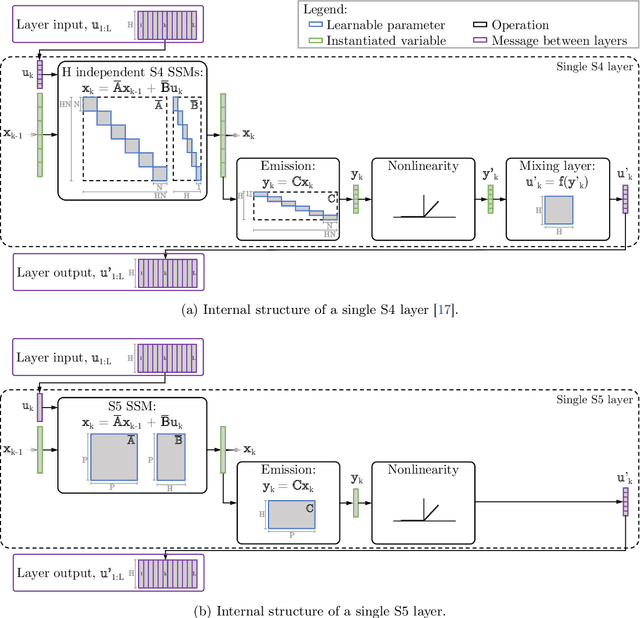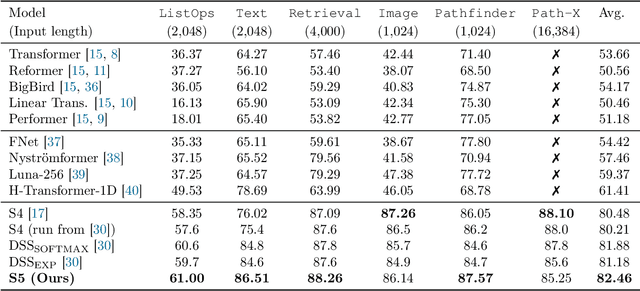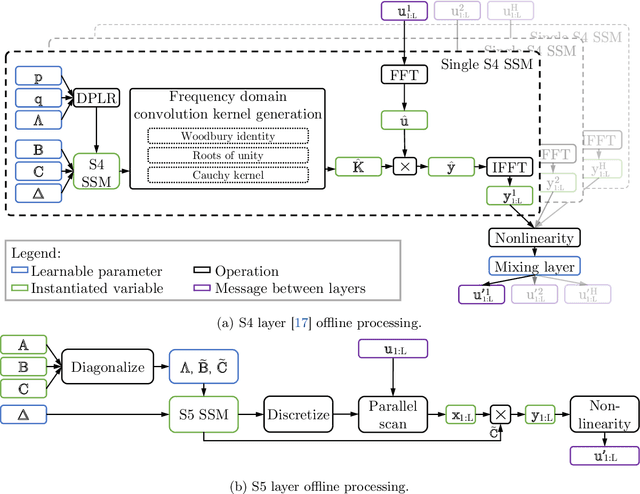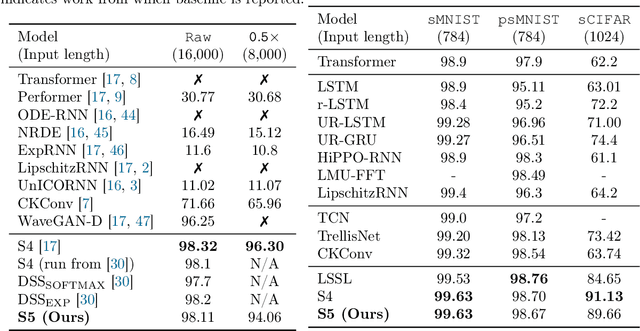Simplified State Space Layers for Sequence Modeling
Paper and Code
Aug 09, 2022



Efficiently modeling long-range dependencies is an important goal in sequence modeling. Recently, models using structured state space sequence (S4) layers achieved state-of-the-art performance on many long-range tasks. The S4 layer combines linear state space models (SSMs) with deep learning techniques and leverages the HiPPO framework for online function approximation to achieve high performance. However, this framework led to architectural constraints and computational difficulties that make the S4 approach complicated to understand and implement. We revisit the idea that closely following the HiPPO framework is necessary for high performance. Specifically, we replace the bank of many independent single-input, single-output (SISO) SSMs the S4 layer uses with one multi-input, multi-output (MIMO) SSM with a reduced latent dimension. The reduced latent dimension of the MIMO system allows for the use of efficient parallel scans which simplify the computations required to apply the S5 layer as a sequence-to-sequence transformation. In addition, we initialize the state matrix of the S5 SSM with an approximation to the HiPPO-LegS matrix used by S4's SSMs and show that this serves as an effective initialization for the MIMO setting. S5 matches S4's performance on long-range tasks, including achieving an average of 82.46% on the suite of Long Range Arena benchmarks compared to S4's 80.48% and the best transformer variant's 61.41%.
 Add to Chrome
Add to Chrome Add to Firefox
Add to Firefox Add to Edge
Add to Edge